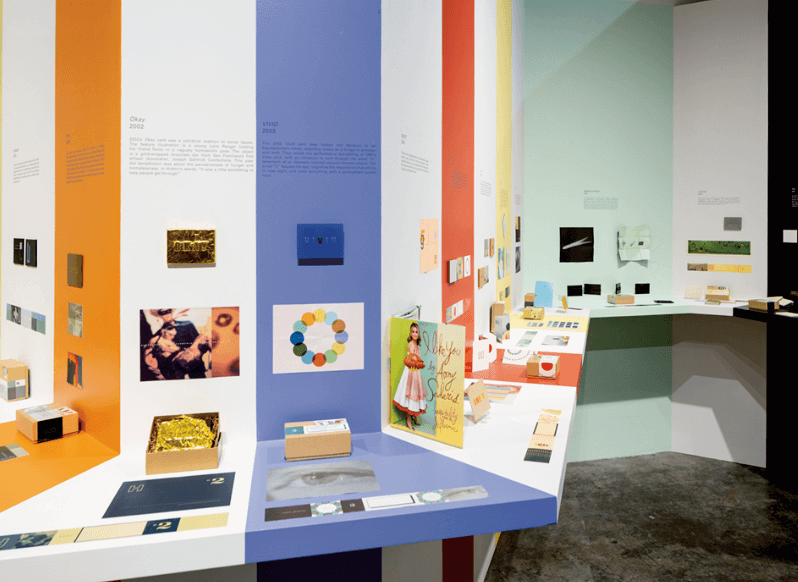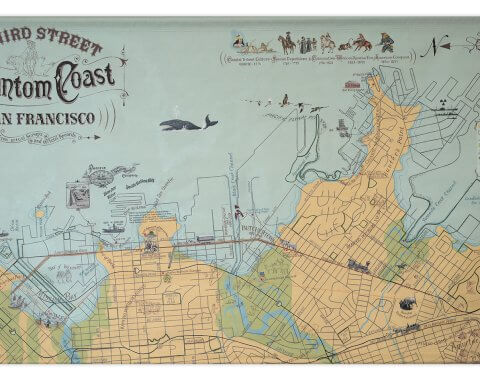
Two exhibitions are on view at the Museum of Craft and Design in Dogpatch, with clocked entries, adherence to public health guidelines, and 3D tours available online. The shows explore a common theme: the passage of time.
Encoded Holidays is a retrospective look at a 30-year collaboration between Bay Area designers Gary Hutton and Tom Bonauro. Beginning in 1987, the two produced an annual Christmas card for friends and collectors which often took the form of a small-scale “sculpture-in-a-box.”The cards’ content was frequently inspired by Buddhist koans, spiritual riddles meant to prompt meditative reflection. Designs were intentionally vague, combining found images with soundbites that didn’t offer immediate meaning, but rather food for thought.

Their 1990 card, Candle and Jewels, consisted of a four-piece puzzle loaded with subtle Buddhist imagery and the words “something for the future.” In 2015, Random Pattern featured twenty slips of mostly blank cardboard.
Larger in size and scope, Design by Time showcases examinations of time by more than twenty high-profile creators and design studios located around the world. The works are grouped into three categories: “Time Visualized,” “Time Performed,” and “Time as Creator.” A noticeable theme throughout is the way in which time, and its effects, can be seen at work on the human body and in nature.
In Afterlife, 2009, James Auger and Jimmy Loizeau imagine a machine that can convert energy expelled by a decomposing corpse into a dry cell battery, the battery then used to power items for the deceased’s loved ones. The piece’s beauty is in the objects on display: an electric toothbrush, flashlight, Christmas ornament, and dildo. Each object is accompanied by a sentimental text in which participants explain why they wanted to power the object after death: to keep a lover’s breath fresh; to light someone’s way.
At first glance, Bartholomäus Traubeck’s Years, 2011, is a turntable bearing an unusual record: a slab of a tree trunk resembling its vinyl counterpart. On closer inspection, the record player’s needle has been modified to house a digital tool capable of collecting data from the tree’s rings. This information – growth rate; texture – is then translated into piano music. By compressing years into minutes, Traubeck’s device makes time travelers of its viewers, as we listen to music the tree created decades ago.
The mutability of time is further explored in A Million Times 80 Copper, 2017, by Swedish design studio Humans Since 1982. The piece consists of a large copper plate featuring eighty clock faces, their hands spinning randomly, without any correlation to actual time. The effect from a distance is of an undulating metal surface. Up close, one or more of the clocks can be caught telling time accurately for an instant, before spinning on, running backwards, or freezing altogether.
Our notion of time has been tested over the last year. It slowed during shelter-in-place. Businesses constantly changed their opening hours with each new public health order. Like a Zen koan, Design by Time offers viewers the space and inspiration to contemplate time’s movement, and our place in it, just as the world begins to speed back up.
Both exhibitions are on view through August 15, 2021.


